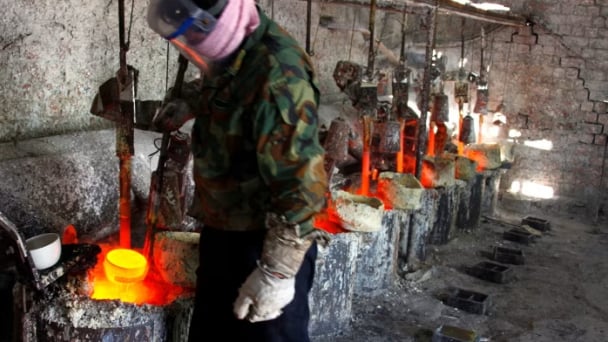June 16, 2025 | 18:42 GMT +7
June 16, 2025 | 18:42 GMT +7
Hotline: 0913.378.918
June 16, 2025 | 18:42 GMT +7
Hotline: 0913.378.918

The dry weather has caused yield and quality losses. Photo: Adobe stock
The country’s total wheat production is forecast to drop to 16.5 million tonnes in the 2021-22 marketing year compared to the USDA’s original estimate in April of 17.6 million tonnes. The dry weather has caused yield and quality losses. Low domestic prices and an increase in input costs has lowered the wheat planted area by 100,000 hectares to 7 million hectares.
The USDA expects Turkey’s wheat consumption to rise by 1.4 million tonnes in the 2021-22 marketing year to 22 million tonnes as a limited barley supply has caused feed millers to utilize more wheat. An increase in demand and a smaller harvest is anticipated to lead Turkey to import a record 11.25 million tonnes of wheat in the 2021-22 marketing year. This same demand and harvest are forecast to decrease wheat exports by 300,000 tonnes to 6 million tonnes.
Similar to wheat, Turkey’s barley production is forcast to slip due to dry weather. Originally forecast to produce 7.7 million tonnes, the USDA now expects the country to harvest about 4.5 million tonnes of barley in the 2021-22 marketing year due to insufficient rains causing yield losses. Consumption of the commodity is projected to be 7.5 million tonnes. The country is expected to import about 2.75 million tonnes of barely due to the smaller production outlook.
Unlike wheat and barley, Turkey’s corn production benefited from favorable weather conditions in late May and June, causing better yield expectations. The USDA said market year 2021-22 corn planting is complete and the country is expected to produce 6.8 million tonnes of the commodity. Expected increased demand from the feed sector is forecast to boost corn consumption by 500,000 tonnes to 9.3 million tonnes in 2021-22.
Due to a high domestic production of corn in 2020-21, imports of the commodity have been slower. Imports of corn in the first nine months of 2020-21 have reached 1.7 million tonnes. The USDA anticipates imports in 2021-22 to be 2.8 million tonnes to meet demand from the feed and starch sectors.
(World Grain)

(VAN) Extensive licensing requirements raise concerns about intellectual property theft.

(VAN) As of Friday, a salmonella outbreak linked to a California egg producer had sickened at least 79 people. Of the infected people, 21 hospitalizations were reported, U.S. health officials said.

(VAN) With the war ongoing, many Ukrainian farmers and rural farming families face limited access to their land due to mines and lack the financial resources to purchase needed agricultural inputs.

(VAN) Vikas Rambal has quietly built a $5 billion business empire in manufacturing, property and solar, and catapulted onto the Rich List.

(VAN) Available cropland now at less than five percent, according to latest geospatial assessment from FAO and UNOSAT.

(VAN) Alt Carbon has raised $12 million in a seed round as it plans to scale its carbon dioxide removal work in the South Asian nation.

(VAN) Attempts to bring down the price of the Japanese staple have had little effect amid a cost-of-living crisis.